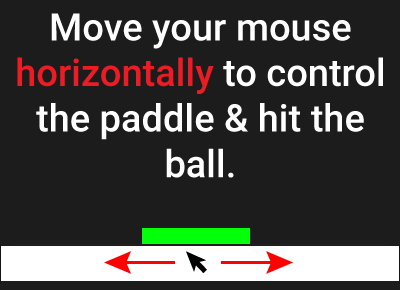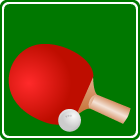


3 scores max per player; No foul language, show respect for other players, etc.
Name | Score | Date | ||
|---|---|---|---|---|
| 1 | ||||
| 2 | ||||
| 3 | ||||
| 4 | ||||
| 5 | ||||
| 6 | ||||
| 7 | ||||
| 8 | ||||
| 9 | ||||
| 10 |

Game: PONG
Aim: Break the bricks, score points
Method:
Use your mouse or tap in the white bar to move the paddle horizontally to bounce the ball up the screen. Answer questions when you break the white bricks, score big points with the yellow bricks.
Your final score is based on correct answers, bricks broken and time taken.

anonymous 🦊
"Two variables"
PONG game to practice
'Subtract fractions: LCD' for 6th grade
6th grade / Number / Fractions / Subtract fractions / Subtract fractions: LCD
With our Pong math game you will be practicing the topic "Subtract fractions: LCD" from 6th grade / Number / Fractions / Fractions. The math in this game consists of 16 questions that ask you to subtract fractions by finding the lowest common denominator (LCD) of the two fractions.
6th grade : Fractions
Sections
5 sub categories:
- Fraction basics
- Add fractions
- Subtract fractions
- Multiply fractions
- Divide fractions
In Year 7 in the UK, students typically continue to build upon their understanding of fractions, which they started developing in earlier grades. Here's an overview of key concepts related to fractions that are commonly taught in Year 7:
Understanding Fractions: Students learn that fractions represent parts of a whole or a group. They understand that a fraction consists of a numerator (the number above the fraction line) and a denominator (the number below the fraction line). The numerator represents the number of parts being considered, while the denominator represents the total number of equal parts that make up a whole.
Equivalent Fractions: Students explore equivalent fractions, which are different fractions that represent the same value. They learn that equivalent fractions can be obtained by multiplying or dividing both the numerator and the denominator by the same number. For example, 1/2 is equivalent to 2/4, 3/6, and so on.
Comparing and Ordering Fractions: Students learn to compare fractions and order them from least to greatest or greatest to least. They understand that when fractions have the same denominator, the one with the larger numerator is greater. When fractions have different denominators, they convert them to equivalent fractions with a common denominator to compare.
Adding and Subtracting Fractions: Students begin to add and subtract fractions with the same denominator (for example, 1/4 + 2/4). They also learn to add or subtract fractions with different denominators by finding a common denominator and then adjusting the numerators accordingly.
Multiplying and Dividing Fractions: Students explore multiplication and division of fractions. They learn to multiply fractions by multiplying the numerators together and the denominators together. For division, they learn to invert the second fraction and multiply. For example, to divide 1/4 by 1/2, you multiply by the reciprocal, which is 2/1.
Fractions in Real-Life Contexts: Students apply their understanding of fractions to real-life situations, such as measurements, recipes, and problem-solving scenarios. They learn to interpret and solve word problems involving fractions.

In our version of Pong/Breakout, there are 3 types of bricks for you to break: green bricks are worth just 2 points; yellow bricks are worth a whopping 50 points; breaking white bricks, which are worth 10 points, wins you a math question from the topic you have chosen.
You start with 5 lives. If the ball goes below the paddle, you lose a life and 200 points. The game ends when you answer all 10 questions or lose all your lives.
Notes
- This version of Pong is a one player game to learn or revise math
- Our PONG for math is a scoring game - play a few times and set a personal best score!
- Addictive! You may end up trying to avoid the white bricks so that you can play for longer...
UXO * Duck shoot * The frog flies * Pong * Cat and mouse * The beetle and the bee
Rock fall * Four in a row * Sow grow * Choose or lose * Mix and match

Latest leaderboard entries: Pong




How to play PONG to practice
'Subtract fractions: LCD' for 6th grade

- Select the PONG game from the games selection page.
- On the settings page there are brief instructions on how to play.
- Click on PLAY to enter the game screen.
- The clock starts when the bell rings.
- Move your mouse (or finger tap or drag in the white bar for touch screens) to move your paddle left and right.
- Knock the ball back up the screen to break the bricks.
- You start with 1000 points and 5 lives.
- You lose 1 point every 2 seconds.
- 200 points are deducted from your score for each life lost
- Green bricks score 2 point, yellow bricks score 50 points, white bricks score 10 points and open the question screen.
- For each question click/tap on the correct answer or enter it using the keyboard.
- Wrong answers lose you 25 points but correct answers win you 50 points.
- Continue breaking bricks and answering questions until you have cleared all the question bricks.
- The game also ends if you lose all 5 of your lives.










